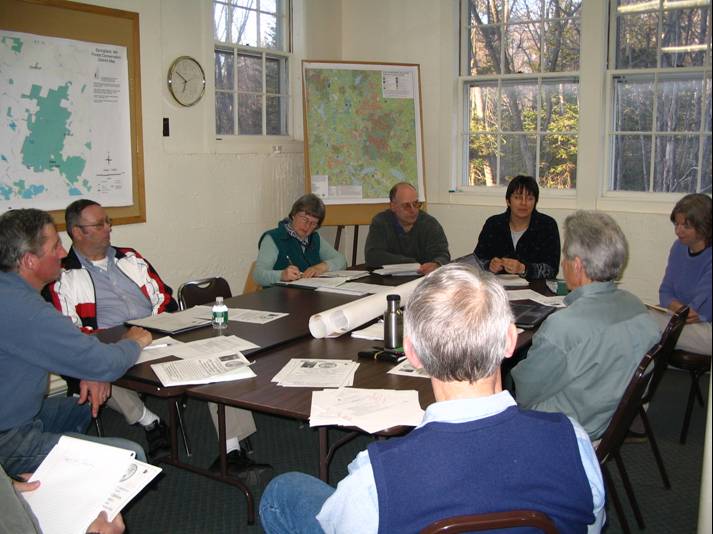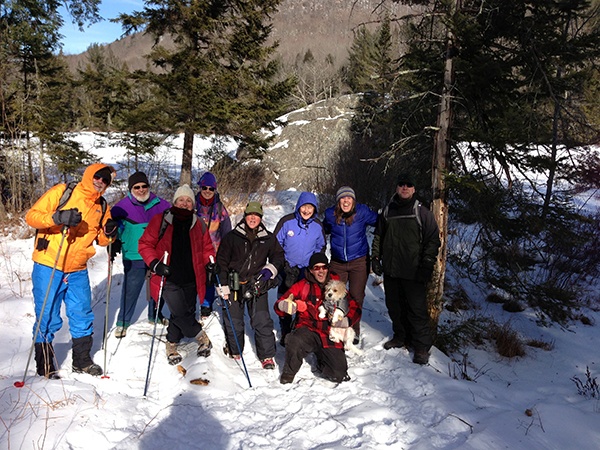|
|

A partnership of NH Fish and Game and UNH Cooperative Extension |
|
New Hampshire's Wildlife Action Plan News and Updates
|
Summer 2013
|
|
|
|
|
Visit takingactionforwildlife.org
| |
|
|
|
|
|
|
Does Your Community Want to
Take Action for Wildlife?

Here
is your opportunity! The Taking Action for Wildlife team is soliciting
applications from individual communities (or groups of adjacent
communities) interested in taking action for wildlife locally.
Assistance will start in Fall, 2013.We can help your community
figure out how to incorporate wildlife information into a natural
resources inventory or natural resources chapter in the Master Plan,
develop conservation plans for wildlife, educate local residents about
important wildlife habitats in town, how to make local regulations more
environmentally friendly, and much more! We tailor our program of
assistance to each community's needs. Your introduction sets the
tone for your newsletter and encourages the recipient to read further.
Your style may be warm and casual, or technical and no-nonsense
depending on your audience.
Click here for the Fall 2013 application details and deadlines. |
|
|
Coverts Cooperators Needed!
Volunteers Working for Wildlife
Are you interested in helping protect
New Hampshire's wildlife? Are you an enthusiastic person,
involved in your community? Do you manage your own land to help
wildlife? Are you concerned about the loss of wildlife habitat in
New Hampshire? If you answered "yes" to any of these questions,
the New Hampshire Coverts Project Workshop may be right for you! The 19th annual New Hampshire Coverts Project Workshop will be held September 18-21, 2013 at the Barbara C. Harris Camp & Conference Center in Greenfield, NH. Read More
|
|
Nongame and Endangered Wildlife Program 25 Years and counting...
The
Nongame and Endangered Wildlife Program is excited to celebrate 25
years of protecting, restoring, and enhancing rare wildlife populations
and their habitats in New Hampshire. When the Nongame Program was
created at NH Fish and Game in 1988, a pair of bald eagles nested in NH
for the first time in almost 40 years. Through dedicated research and
protection from the Nongame Program and its many partners, bald eagles
can now be seen in most of our river systems across the state, and were
removed from the federal endangered species list as a result. Other
birds benefited from the program's assistance as well - in 1997, the
Seabird Restoration program was initiated at the Isles of Shoals, where
in less than ten years NH went from just six remaining pairs of
state-endangered common terns to protecting over 2,500 breeding pairs! Read More
|
 Campton Taking Action for Wildlife Planning
outreach in your community? Take a page from Campton's book and
consider hosting an outdoor field event, exploring local habitats. The
Campton Conservation Commission (CCC) took on a landowner outreach
project this past fall and winter to raise awareness of the Campton Bog,
an area ranked as a high priority habitat in the NH Wildlife Action
Plan. After a meeting with the Taking Action for Wildlife Team the CCC
members, buzzing with ideas, rolled up their sleeves and got to work
planning a two-part program that included a winter "Frozen Bog Walk"! Read more. |

Got Bats?
NH Fish and Game would like you to count them! We are looking to learn
more about the bats that use our barns, churches, houses and other
structures for their homes. A bat count is easy and fun. Gather your
friends and learn how
|
|
New Wildlife Research! Is songbird reproduction affected by a reduction in caterpillars caused by exotic shrubs?
Recent
research from UNH and the University of Delaware has confirmed that
non-native "exotic" shrubs such as glossy buckthorn and autumn olive
support far fewer caterpillars than native shrubs - this is because
caterpillars here in the US have not evolved with these exotic plants
and are therefore unable to tolerate the chemicals the plants produce to
discourage herbivory. As a result, shrubland habitats such as
old-fields and powerline rights-of-way that are dominated by exotic
shrubs contain a lower abundance and diversity of caterpillars than
those same habitats dominated by native shrubs such as dogwoods, alders,
and willows. This is concerning because shrubland songbirds rely on
caterpillars as the primary food they feed to their young during the
breeding season. Read More
|
 |
|
Newsletter Editor: Amanda Stone (UNH Cooperative Extension)
Photo Credits:
Frank Mitchell (Banner photo), Malin Clyde (Coverts), Lea Stewart
(Campton), Emily Brunkhurst (Bat), Matt Tarr (Common Yellowthroat),
Amanda Stone (Springfield, Wetland)
|
|
|
|
|
|
|
|
|